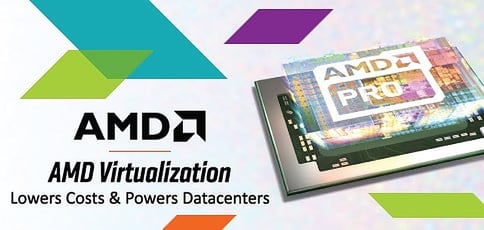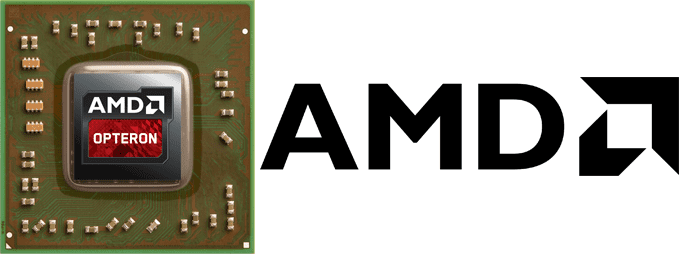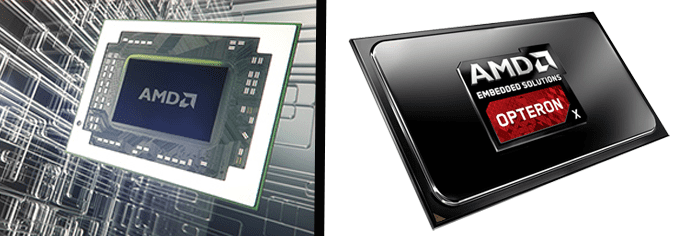
TL; DR: Before 2006, when most people thought of virtualization, software came to mind. Software-based virtual machines had become prevalent in the IT industry because they maximized resources to ensure high-performance computing for their employees, partners, and customers. AMD recognized this and became one of the first companies to reimagine an even more effective form of virtualization. AMD Virtualization (AMD-V™) is on-chip, hardware-based technology that offloads virtualization tasks from software emulators and handles them through enhancements in the processor’s instruction set. The result? Clients could run multiple operating systems and applications on a single machine to keep business flowing. This became the standard model still being employed by IT shops today.
In the past, IT shops often practiced the “one application, one server” approach. That is, IT managers would deploy only a single application, such as an email server or database management system, to one server. After the advent of virtualization software, that approach became too costly and inefficient.
With virtualization, IT shops were able to use emulation to create one or more virtual machine(s) on a single server. The end result was an infrastructure that maximized the use of its resources and saved money.

AMD’s on-chip, hardware-based virtualization solution maximizes the performance of virtual resources.
This proved beneficial to the businesses taking advantage of the tech at the time. However, because these software-based virtualization solutions didn’t have proper access to a server’s processor, they were often power-limited versions of the emulated systems. In 2006, AMD recognized the need to innovate and became one of the first companies to devise a hardware-based virtualization solution to help IT shops improve the performance of their virtual machines.
AMD-V™ Employs On-Chip Features to Boost Performance
AMD-V is on-chip technology that effectively offloads virtualization tasks from software emulators and handles them through enhancements in the processor’s instruction set. The net result is each virtual machine has more processing power, which allows a single server to do more with less.
AMD-V supports the following functionalities:
- Client-side virtualization: Windows 8 and later versions allow virtualized operating systems through the use of Client Hyper-V.
- Virtual Desktop Infrastructure (VDI): Some virtual machines are hosted on a hardware virtualization center in a server farm as opposed to being hosted on a traditional OS.
- Blade PC, OS Streaming, and Terminal Services: These are solutions that require support for concurrent users, low power, or high memory requirements.
To make things easy on their customers, AMD designed their virtualization technologies into every AMD PRO A-Series APU. Also, since those solutions are built on open standards, customers have the ability to choose a processor that’s tailor-fit to their bottom line, as opposed to being locked into a proprietary solution.
AMD-V’s extensions allow server software to create virtual machines more efficiently. Tagged TLB facilitates quicker shifts between virtual machines for better responsiveness, and I/O virtualization allows direct device access and improves application performance.
Hardware-Assisted Virtualization Reduces Downtime Risk & Expenses
Ironically enough, many of the businesses that didn’t take advantage of virtualization when it hit the scene often created exactly the kinds of problems they were trying to avoid. For example, an organization that followed the archaic “one application, one server” approach would have needed a server farm large enough to support all the applications required by company employees, partners, and customers. That kind of infrastructure would outgrow its own support team and lead to a maintenance nightmare that frequently resulted in downtime.
So what happened then? Employees couldn’t do their work, partners couldn’t access needed systems, and customers couldn’t get the service they needed. That last point, of course, was the obituary of many companies that had an otherwise outstanding business model.

AMD-V’s hardware-assisted virtualization keeps critical line of business apps running and reduces expenses.
Virtualization solved the problem of sprawling server farms by using hardware resources more efficiently. Companies that used a smaller IT infrastructure found it was easier to maintain and, therefore, less likely to experience a fault.
Of course, virtualization didn’t become a sound solution just because it led to better IT management. It also kept costs low.
Companies that virtualized their servers and applications enjoyed improved cash flow, as they were spending less on operations management, networking, and hardware. In short, businesses that used a virtualized IT environment got the best of both worlds: cost-effectiveness and dependability.
AMD’s Virtualization & Cloud Solutions Provide Value & Dependability
Today’s companies know cloud computing with virtualization is a match made in IT Heaven. That’s because cloud computing is designed to run operating systems and applications remotely so that end users can gain full functionality from a thin client.
It’s easy to spot a business that mixes cloud computing with virtualization. Almost every web hosting provider advertises virtual servers online because virtualization, especially AMD’s hardware-based version, means high availability.
Customers of these hosts just sign up for the service, pay a nominal monthly fee, and enjoy the full benefits of a private host that’s really a virtual slice of a server they’re sharing with other customers. People who visit websites hosted on a virtual server have no idea they’re sharing it with any number of other people visiting other sites hosted on the same physical server.
Many of these hosts are most likely employing AMD technology. AMD’s Opteron processors support AMD-V technology so that users can enjoy the full benefit of a cloud solution that offers up to 16 cores and scales to handle peak traffic loads.
Additionally, cloud environments powered by AMD processors enjoy three distinct benefits:
1. Scalability
- Better server use at higher ROI per rack
- Flexibility to handle demanding throughput
- Quick response to fluctuating workloads
- Reduced overhead with AMD-V technology
- Improved performance as unused power headroom is transformed into compute power
- Increased coherent memory bandwidth
2. Dependability
- Consistent throughput
- Live migration of virtual machines between any AMD processor-based servers
- Hardware-assisted security to protect data in a virtual environment
- Encryption for improved security
3. Business value
- Maximizes the value of every dollar spent on servers
- Improved price/performance per virtual machine and rack
- Limits maximum processing power without reducing CPU frequencies
- Enables processors and cores to operate at lower power during minimal workload periods
- Reduces power consumption by allowing idle cores to enter a halt state
- Turns off sections of the processor when inactive, reducing power consumption and heat
- Enables servers to drop into a low-power mode if the temperature gets too high
Overall, AMD cloud computing solutions are designed to help businesses keep critical applications running and IT budgets under control.
Network of Hundreds of Professionals Troubleshoot & Solve IT Issues
The IT shops across the world that adopted virtualization to maximize the use of their IT spend also wanted quality customer service from the vendors they chose to implement their virtualized solutions.
Anybody who’s worked in an IT environment for any length of time knows any application, platform, or hardware is only as good as its support, and AMD has always excelled in offering outstanding support to customers. Their Processors Forum provides access to a network of professionals engaged in a dialogue on AMD virtualization-related topics.

AMD’s Support Community is a vast network of professionals collaborating to solve tech-related problems.
Users experiencing problems with an AMD processor, or those who simply have a question, can post their inquiry in the forum. Not only will they receive a response from a qualified AMD professional, they might also receive helpful responses from other AMD customers. The forum is open to anyone and doesn’t require a lengthy registration process to contribute.
The forum is also a great way to get some pre-sales support. Users who have a concern about one or more AMD processor(s) can ask questions on the forum before they’ve made a purchase. AMD’s hardware-based virtualization solutions, coupled with their exceptional customer support, give users the tools they need to maintain the flow of business and keep datacenters running.
HostingAdvice.com is a free online resource that offers valuable content and comparison services to users. To keep this resource 100% free, we receive compensation from many of the offers listed on the site. Along with key review factors, this compensation may impact how and where products appear across the site (including, for example, the order in which they appear). HostingAdvice.com does not include the entire universe of available offers. Editorial opinions expressed on the site are strictly our own and are not provided, endorsed, or approved by advertisers.
Our site is committed to publishing independent, accurate content guided by strict editorial guidelines. Before articles and reviews are published on our site, they undergo a thorough review process performed by a team of independent editors and subject-matter experts to ensure the content’s accuracy, timeliness, and impartiality. Our editorial team is separate and independent of our site’s advertisers, and the opinions they express on our site are their own. To read more about our team members and their editorial backgrounds, please visit our site’s About page.

